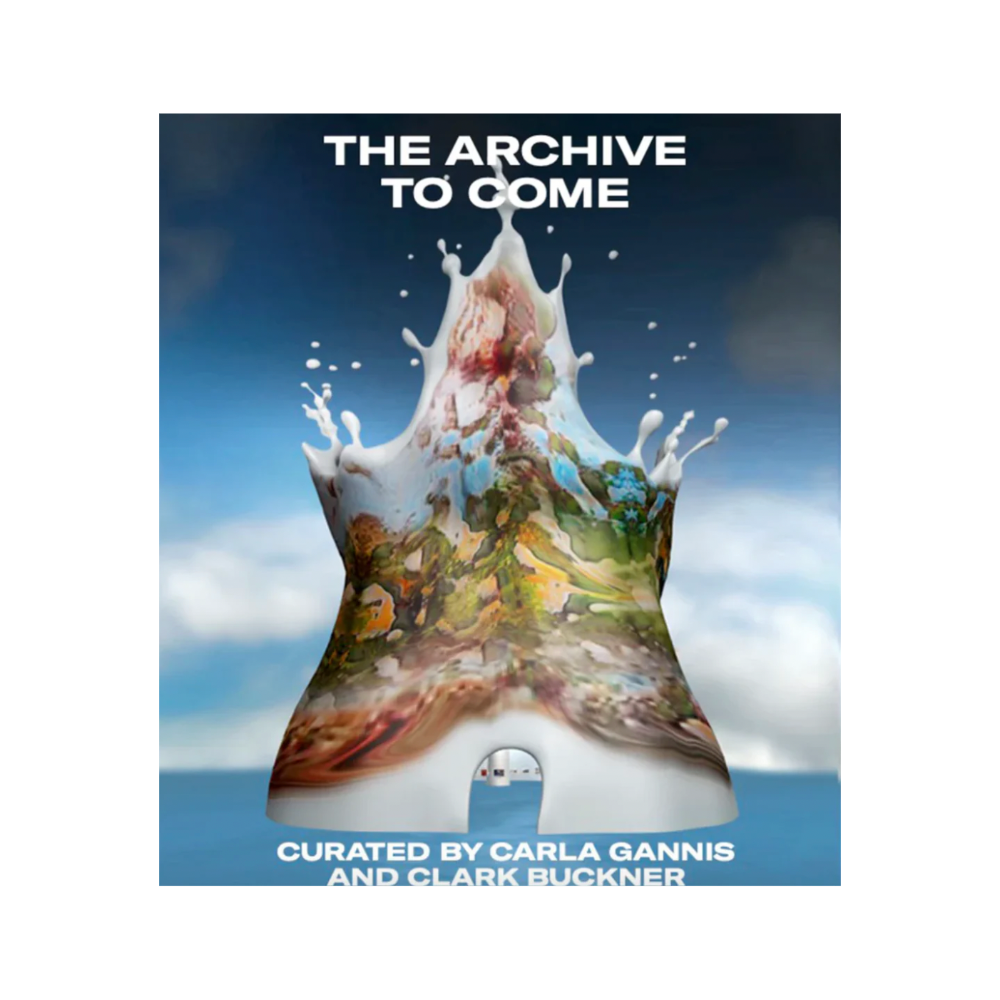Telematic Media Arts
The Archive to Come
The Archive to Come
Couldn't load pickup availability
Curated by Carla Gannis & Clark Buckner
Documenting an exhibition of work by more than 50 international artists, co-curated by artist Carla Gannis and gallerist, Clark Buckner, in Fall 2020, in response to the Covid-19 pandemic, Black Lives Matter Protests, and the crisis of the republic.
Featuring work by: by Alfredo Salazar-Caro, Alicia Escott, Antonio Roberts, Auriea Harvey, Bayeté Ross Smith, Caroline Sinders, Christina Corfield, Clareese Hill, Claudia Hart, Danielle Siembieda, Darrin Martin, David Bayus, Faith Holland, Faiyaz Jafri, Gabriel Barcia-Colombo, Genevieve Quick, Gretta Louw, Hank Willis Thomas and Kambui Olujimi, Jakob Kudsk Steensen, Jamel (Jam No Peanut) MC-Ting Budong, Jenifer Wofford, LaJuné McMillian, Laura Gillmore, Laura Hyunjhee Kim, Laura Splan, Leila Weefur, Liss Lafleur, Lorna Mills, Lynn Marie Kirby and James Kirby Rogers, Mads Lynnerup, Maggie Roberts [Orphan Drift], Mark Amerika, Mark Klink, Martina Menegon, Mary Flanagan, Minoosh (Raheleh) Zomorodinia, Mohsen Hazrati, Molly Soda, Noth (Qinyuan) Liu, Penelope Umbrico, Porpentine Charity Heartscape, R. Luke DuBois, Ranu Mukherjee [Orphan Drift], Rosa Menkman, Ruben Natal-San Miguel, Sean Capone, Shaghayegh Cyrous, shawné michaelain holloway, Sherie Weldon, Snow Yunxue Fu, Surabhi Saraf, Susan Silas, Tamiko Thiel, Tiare Ribeaux, Yuliya Lanina
In March 2020, when the COVID-19 pandemic first exploded across the globe, New York artist Carla Gannis was working with curator Clark Buckner, finishing the installation of her exhibition wwwunderkammer at San Francisco’s Telematic Media Arts. The outbreak of the pandemic, however, interrupted their plans, and the show sat follow for the next six months as the world struggled collectively to mitigate the pandemic’s harm.
During that time, Carla and Clark curated The Archive to Come, an exhibition of short time based works by more than fifty artists from across the country and the world, presented simultaneously in three different formats: as a gallery show in meat space, as a series of screenings on the gallery’s website, and as an exhibition of still images from the time-based works in an online virtual reality (VR) gallery built by Carla.
Along with the pandemic and the weaknesses it revealed in our society, the police murders of George Floyd and Breonna Taylor had sparked Black Lives Matter protests, contesting the persistent systematic racism in America. The crises raised fundamental questions about what we valued and wanted to preserve as we worked to recover from the ravages of disease and racism and build for the future. How would we memorialize those whose lives had been lost? What could do justice to the fact that so many had died needlessly as the result of government inaction and political maneuvering or worse, as victims of racist terror and state violence? How could we redress the unequal distribution of suffering and work to dismantle systems of oppression? What histories demanded to be foregrounded, and what legacies needed to be left behind? What did we carry with us as we withdrew into isolation and emerged in protest? What were the sources of precariousness and resilience in our personal and collective constitutions? What kinds of work did we honor as essential? What did we need to preserve our sense of well-being? What novel modes of being and relating had we developed to maintain our social connections? What did we hope for the future?
Oriented by the concerns in Carla’s wwwunderkammer project, she and Clark heard these as questions of the archive, which both founds and sustains the authority of discourses, institutions, and practices in the modern world. As they understood it, they were questions concerning the construction of memory, knowledge, power, and authority; and they presented themselves at that juncture, amidst these crises, as both problems and possibilities: revelations of the previously unconscious contradictions in our way of doing things, as well as opportunities to re-orient our attunement to the world.
In her wwwunderkammer, Carla appeals to the 16th-Century cabinets of curiosity to consider the uncanny complications of grounded reality and virtual reality, nature, and artifice, science and science fiction in contemporary digital culture. She explores these complications as evidence of an ontological underdetermination in experience, rich with potential for transformative intervention; and she works to build virtual worlds, founded upon de-colonizing, post-humanist, and feminist archives, countering the prejudicial assumptions of the dominant algorithms and the visual culture of Silicon Valley. In this way, The Archive to Come also opened Carla’s concerns to consideration by a broad field of other artists, inviting them to construct and share archives of their own, to reflect upon the correlative issues of historical trauma and displacement, and to consider how the digitalization of memory has changed the experience of what we remember—indeed, memory and experience themselves.
The result was an exhibition addressing loss, memorialization, crisis, and re invention, through the lens of contemporary networked culture and digital media.
Works in the show were organized into five categories, including: 1) Covid-19, 2) History, Conflict, and Social Justice, 3) New Sensibilities: Cyborg Eco-Feminism, 4) Digital Culture, Surveillance, and the Afterlife; and 5) Speculative Fictions: Past and Future.


